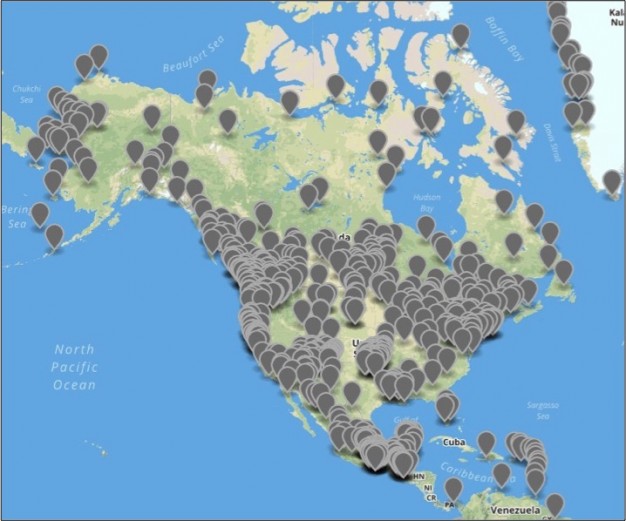Introducing the New Indigenous Subject Guide
The APS Library and its Center for Native American and Indigenous Research (CNAIR) are pleased to announce the completion of a new Guide to the Indigenous Materials at the American Philosophical Society Library.
This new subject guide provides unprecedented coverage of the oldest and one of the largest archival collections of manuscripts, photographs, audio-visual recordings, and other documentary materials relating to the languages, cultures, and histories of Indigenous peoples of the Americas. These collections date from 1553 to 2017 and relate to over 500 different Indigenous cultures and languages.
This new resource, which took 2½ years to complete, was made possible thanks to a generous grant from the National Endowment for the Humanities. It replaces the previous Native American Subject Guide, which had been last updated in 1979, adds information for over 1000 linear feet of new archival material brought into the library in the intervening years, and includes a thorough overhaul of the methods by which the Indigenous-related collections are represented and described.
Using the Guide
Each entry in the guide provides an overview of the content about a particular culture or language found in a collection, as well as information on how to locate that material in the finding aid for the given collection.
Researchers can search the guide using keywords, browse the guide to see all entries for a particular language or culture, and explore the guide through the new map-based interface, which shows many of the specific places to which these materials are connected.
For any set of search results, researchers can also utilize the guide’s faceted searching function to refine their search results further. For any set of search results, a variety of “facets” appear on the left-hand side of the screen: Culture, Language, Creator, Subject, Type, and Genre. Clicking on any of the terms listed under these facets will narrow the search results to all items with that characteristic. Users can click on multiple facets to narrow results even further as desired.
For example, a researcher typing in a keyword search for “Inuit” will receive 35 results. If that researcher is mainly interested in audio recordings, they can then go to “Type” facet on the left-hand menu and click on “Sound recording” to see just those collections with Inuit-related audio.
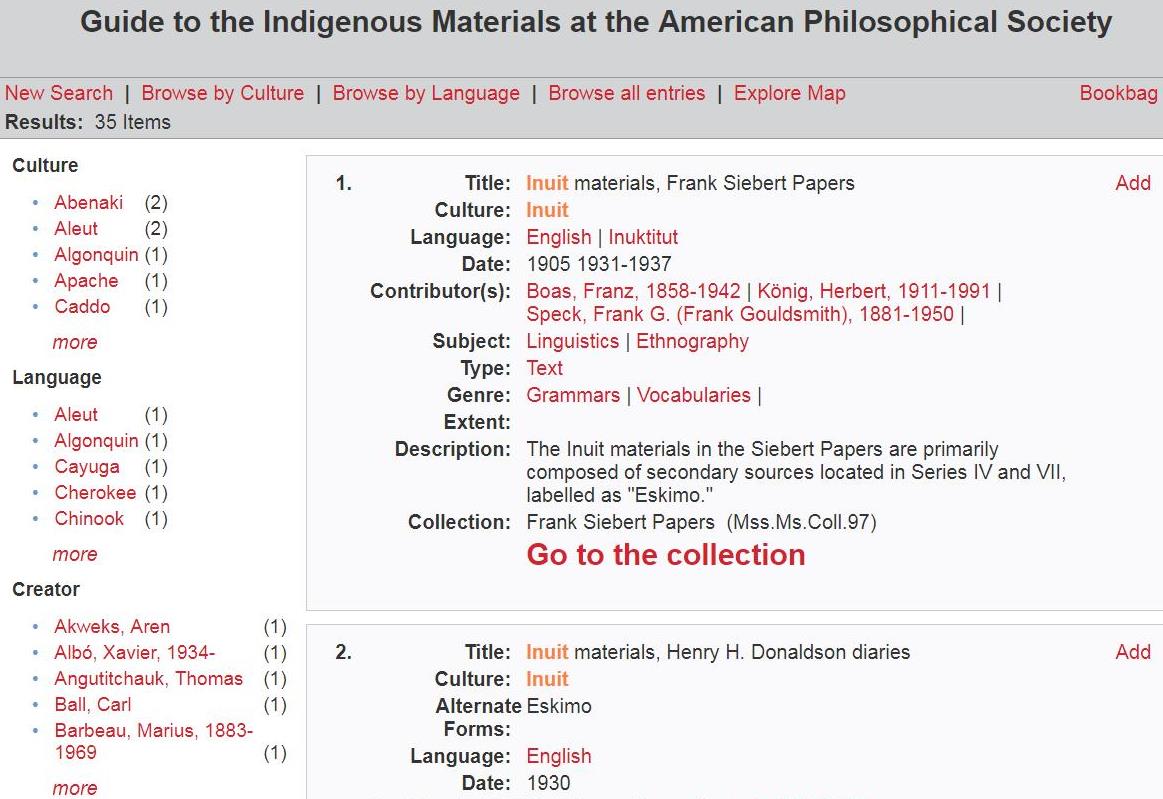
If this researcher were not just looking for audio recordings relating to Inuit, but to Inuit of a specific region, such as Inuvialuit, they could then go to a facet such as Culture and click on “Inuvialuit” to narrow it further to collections with Inuvialuit audio material.
Researchers can also adjust these narrowed-down searches by undoing particular facets. In the example of this Inuit search, by clicking on the “X” next to “Sound recordings” but leaving “Inuvialuit” checked, the researcher would then see all results for Inuvialuit materials regardless of what kind of physical item it might be.
Understanding the map
The map-based interface shows specific locations from which certain materials in the collections originated. Each marker contains links that lead to the entries in the guide for those particular materials. Except for a handful of instances, the markers do not indicate general cultural locations. Rather, the markers denote specific communities, towns, and other locations where materials were made or recorded. (Locations of sacred sites and other sensitive locations are specifically not given markers on the map.)
When exploring the map, you can also use the listing of place names on the right-hand side. Clicking on any place name will center the map on that marker, from which you can then zoom in to see just where it is.
Many materials in the collections are not represented on the map. There are several reasons for this. Many items cannot be represented by a single point because their content is not specific to a particular place—for example, a manuscript about an entire language family, or a map showing traditional territories over a large region.
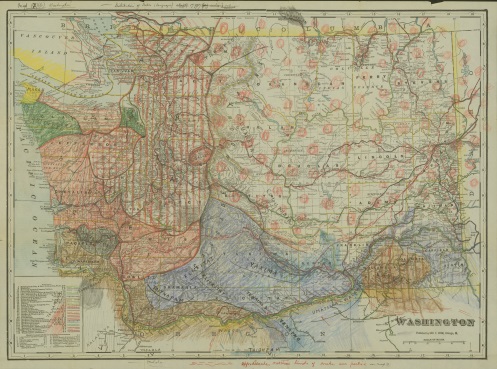
Materials also might not appear on the map-based interface because the information about where a specific story was told or a particular photo was taken may not exist with the material itself. In some cases, the location information for materials such as these can be figured out through further research or from insights from experts in Indigenous communities themselves, but for many items their location will remain unclear.
Because of this fact, it is important to emphasize that the information listed for a particular location may not necessarily be everything in the collections associated with that place. Likewise, just because a marker may not appear for a particular community, that may not necessarily mean that there is nothing in the collections from there.
Correction of obsolete terminology
In overhauling and updating the subject guide, we have also thoroughly revised the names we use to describe Indigenous languages and cultures in the collections. In place of terms that are pejorative or simply no longer in most common use, we now use names in common, contemporary usage that also accord with how each culture or language refers to itself in an English language setting. If a historian or anthropologist, for example, used one of these now-obsolete terms (or a plainly inaccurate one) in giving titles to their own material, we have retained that term in the description of that given item, with the contemporary term now given alongside, in order to reflect the history of how these terms were employed.

Many names, whether the obsolete ones or the correct ones, may also be spelled in a number of different ways depending on region or time period. In these cases, people searching the guide will receive full listings of all relevant search results whether they type in the main spelling of a name used in the guide (e.g. "Ojibwe"), other alternate spellings ("Ojibwa," "Ojibway"), or older obsolete names.
Recognition of Indigenous authorship and expertise
The new guide also gives fuller recognition of the roles of Indigenous people who took part in the creation of these materials and whose knowledge of their culture, language, and history are the very foundation of the collections. In past descriptions of materials, when there was information on the names of Indigenous people who provided their expertise, this information generally appeared only in hard-to-notice places deep within finding aids. The new guide brings these names to more prominence and adds several hundred more that previously did not appear at all. It also adheres to the equally important requirement of maintaining the privacy of consultants who expressed an explicit desire to remain anonymous.
These changes are only the beginning of the work that needs to done on this front. Future priorities include the creation of biographical profiles of Indigenous contributors in collaboration with Indigenous communities, and the inclusion of other community-curated content to reframe these materials so that they are not exclusively described through the lens of Western academic disciplines.
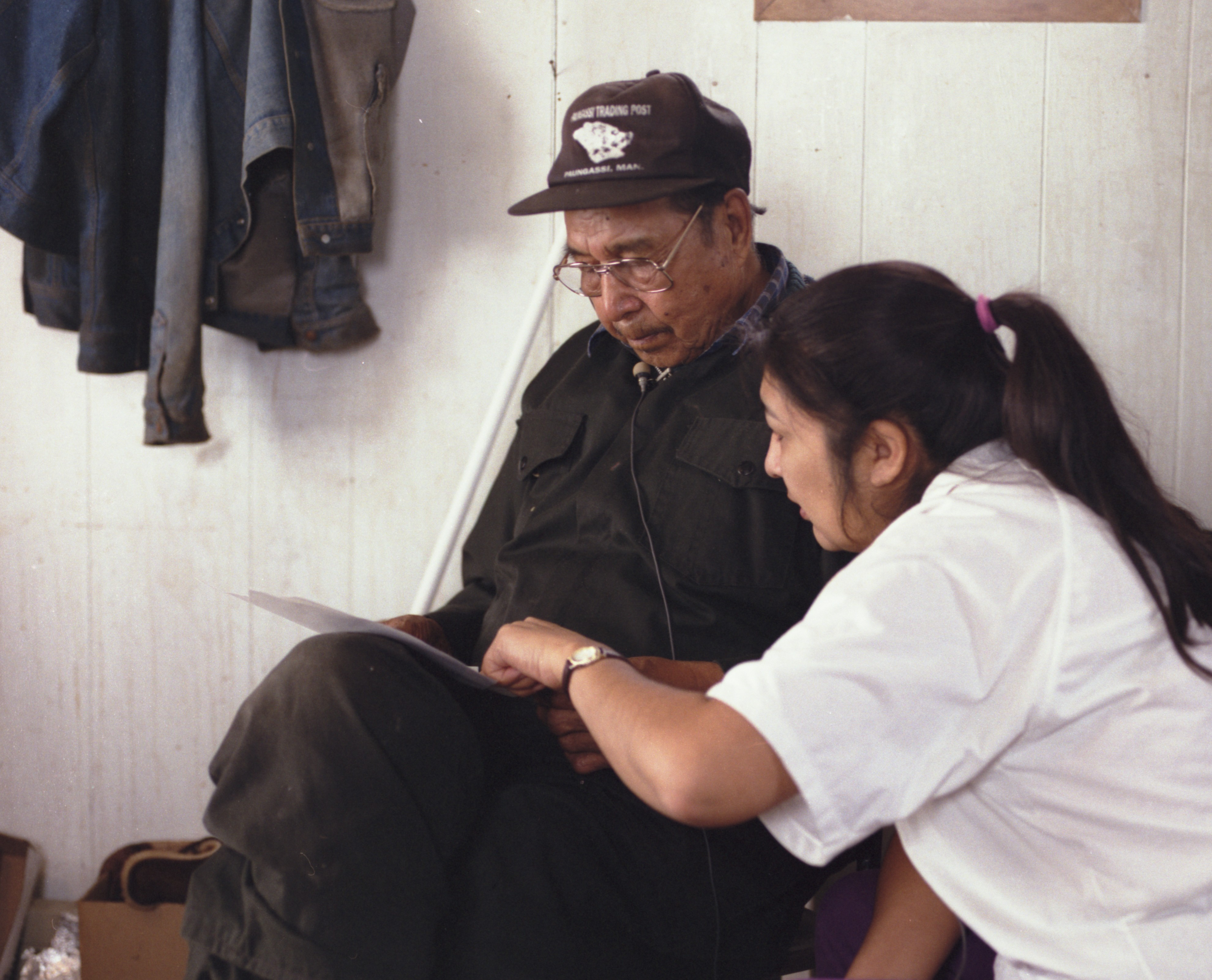
Are all Indigenous materials at the library represented in the guide?
Almost all, but not quite. Because of this, it is important to understand that the guide is a starting point when doing research, not the final word.
Here are some kinds of things that are not fully represented in the guide.
Uncataloged collections
The current guide includes materials that arrived at the library through 2014. Since that time the library has brought in about 200 linear feet of new archival manuscripts and several hundred hours of audio and video, all relating to indigenous languages, cultures, and histories. These more newly-arrived collections include not only materials that were created in more recent decades, but also some that date back to the mid-19th century. These newer additions to the library do not yet appear in the guide nor in the general catalog for the library's collections.

Photographs
Very often, sets of photographs come with very little information regarding where they were taken, when they were taken, and who or what is in the photographs. This presents a challenge for archivists when it comes to describing the photos with enough accurate information to make their existence known to people who might be looking for such things.
Photos that do have labels can sometimes have inaccurate or misleading ones, based upon incomplete information provided by the person who took or collected the photographs. For example, the papers of the anthropologist Frank Speck contain hundreds of photos labeled as Penobscot, a native Nation where he did research for decades. However, from working with experts from the Penobscot Nation, we learned that some of the people in the photographs are actually Passamaquoddy, a neighboring Nation in Maine. This was then confirmed by experts from the Passamaquoddy Tribe.
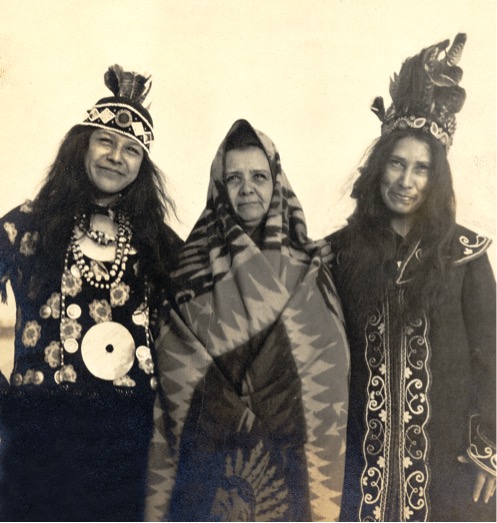
Examples such as this teach us that there are likely to be many other similar cases in the collections that we are not yet aware of, but can learn through working with indigenous communities and scholars.
Correspondence
Just about every manuscript collection in the library contains a large amount of correspondence. The vast majority of these letters are not described according to their subject matter, as it is extremely labor-intensive to assess all of them in this way. So, in an entry in the guide that describes the materials in a particular collection relating to a particular indigenous culture, it is possible that there may not be any mention of correspondence. However, in some cases, that collection may actually indeed contain letters relating to that language or culture. We encourage researchers to peruse the finding aids, looking especially in sections labelled things like "Series I: Correspondence," for names of correspondents who may have had knowledge about particular matters.
Here at CNAIR, we are continually creating more subject information for correspondences that are especially information-rich or frequently asked about. As we complete them, this information will be added into the guide and into the finding aids, to help make these materials easier for researchers to discover.
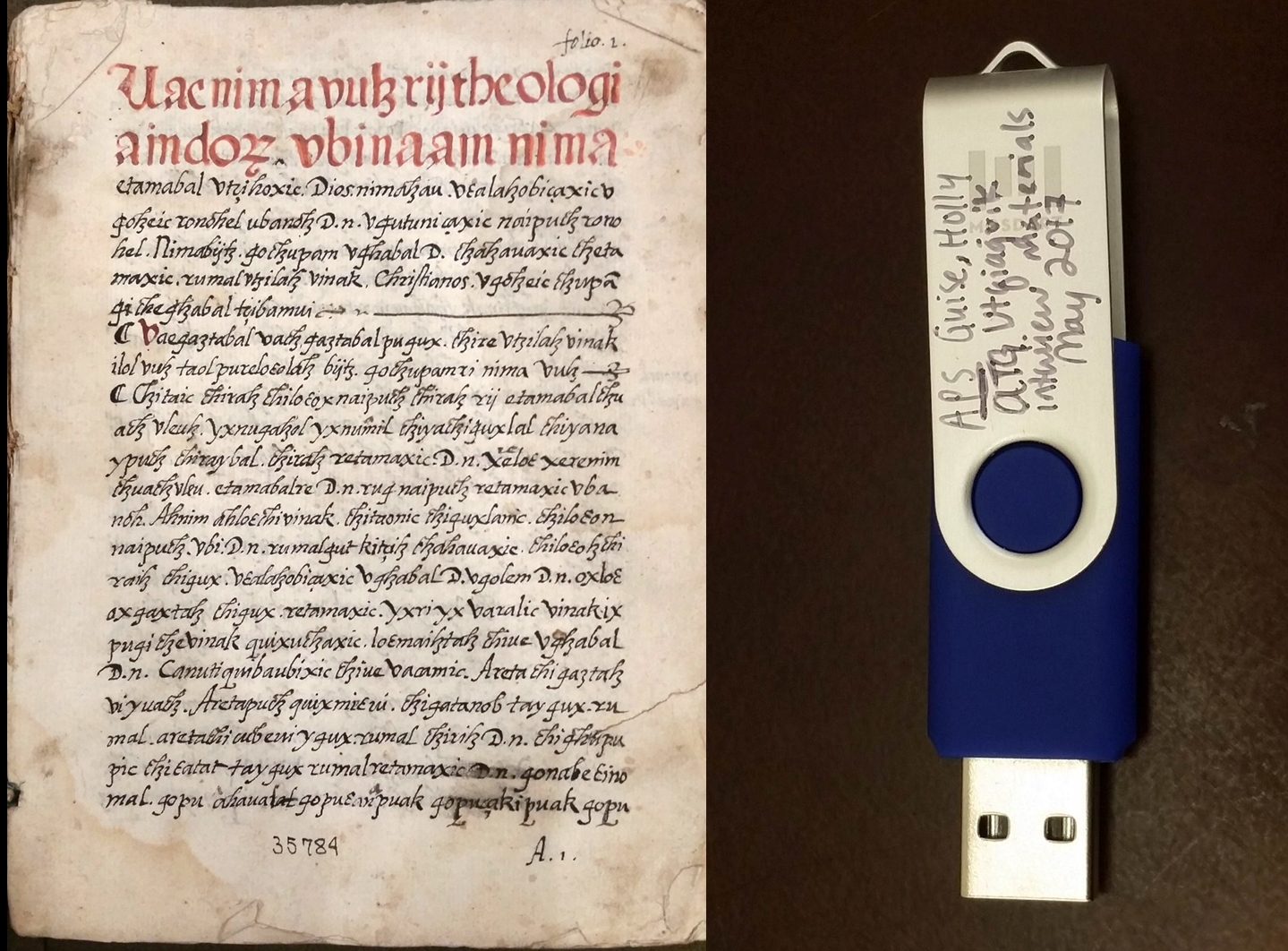
The Future of the Guide
We will continue to update the guide regularly, adding new entries, more in-depth information to existing ones, and more points on the map, as we catalog new materials and improve descriptions of long-standing collections.
We encourage you to return to the guide from time to time to see if new materials have been added that related to what you’re interested in. We will indicate the dates of the latest update on the front page of the guide, and also make announcements through blog posts like this to feature new additions and improvements. Newly digitized items are also regularly added to the APS Digital Library, giving direct access to archival materials.
Whether you find many things of interest when using guide or no results at all, we encourage you to be in touch and let us know what you’re looking for. Even with this robust new guide, materials can be challenging to assess from descriptions alone. We are eager to learn how we can assist in your research, and also to receive feedback on further ways to improve this guide so that these important materials are represented in accurate, appropriate, and meaningful ways.


